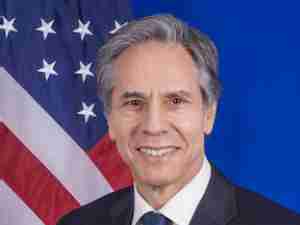With or Without the U.S., TPP Shouldn’t Stop at 11
By: The Editors | Nov 14 2017 at 09:20 PM | International Trade
The 11 governments that appear to have saved the Trans-Pacific Partnership deserve credit for persevering after President Donald Trump withdrew the U.S. from their ambitious free-trade pact. They’ll deserve even more praise if they resolve to take the agreement further.
South Korea, Taiwan, Thailand, Indonesia and the Philippines aren’t yet members—but all have expressed interest in taking part. Expansion to a TPP-16 would greatly increase the economic benefits for all concerned. In due course, that might help the U.S. to see where its own best interests lie, and persuade it to rejoin the project it pioneered.
As it stands, the TPP-11 deal that was agreed to in principle at the Vietnam summit is still valuable. The U.S. decision to stand aside will reduce the remaining members’ economic benefits by roughly half. Even so, the gains will be substantial—especially for countries such as Malaysia, Singapore and Brunei that export more to the remaining members than they do to the U.S.
Adding new members could drastically increase those benefits. According to the Peterson Institute for International Economics, moving from 11 to 16 would triple the gains to members to roughly $500 billion a year—more than the original TPP-12 would have yielded. That’s because it would join together three advanced economies (Japan, South Korea and Taiwan) that don’t currently share a free-trade agreement, and because it would drive the development of new supply chains across Asia.
Granted, getting to that point won’t be easy. First, the TPP-11 have some remaining issues to sort out before they can ratify their pact. Regarding further expansion, Thailand and Indonesia aren’t as eager as they should be, because the agreement calls for difficult domestic reforms. Taiwan is enthusiastic and has already started to prepare, but Chinese resistance is likely.
Japan, which led the push for TPP-11, should start a diplomatic effort to persuade Thailand and Indonesia to join. And TPP members should assure China that it too is welcome if it’s willing to adopt the agreement’s high standards. Last weekend’s tentative agreement has stolen some of the spotlight from the Regional Comprehensive Economic Partnership, a less ambitious deal that includes China. That needn’t matter: A thriving TPP trade bloc could serve the same purpose, only better—helping China to prosper and reform by offering greater access to rapidly growing markets.
Trump laid out a very different vision in Vietnam, rejecting big multilateral agreements in favor of bilateral deals in which the U.S. can use its size to gain advantage over rivals and partners alike. Any arrangement that furthers free trade is worthwhile—but such deliberately one-sided negotiations mean slower progress on a smaller scale.
With a growing TPP in the works, nations will have other options. Increasingly, Trump’s thinking on trade will end up hurting U.S. businesses. American exporters have already borne losses as other countries have pushed ahead with their own trade deals—losses that the U.S. Agriculture Department expects to rise. Opposition at home will grow.
That’s why, with luck, a maximalist approach to TPP might bring in not just China but also the country that came up with the idea and was once the global champion of liberal trade.
This article does not necessarily reflect the opinion of the AJOT editorial board or Fleur de lis Publishing, Inc. and its owners.









